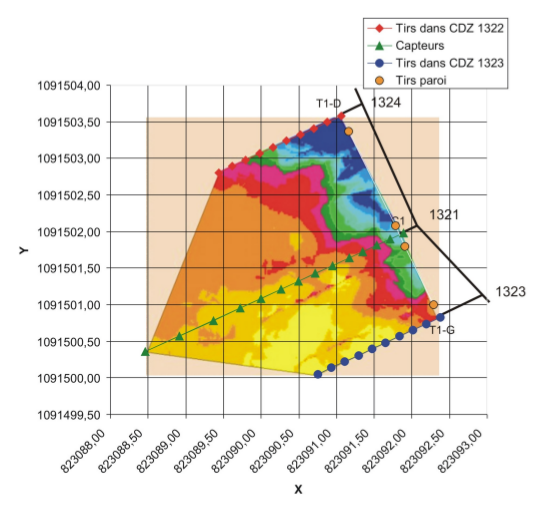High resolution imaging of the subsurface
A major aspect of the laboratory's research work involves developing innovative experimental devices, tailored to the geometry of the objects being studied, optimizing the signal-to-noise ratio of the signals, pre-processing the information to extract robust observables, and formulating and solving the associated inverse problems, depending on the volume to be investigated and the expected resolution.
The laboratory is thus working on adapting and developing specific inverse problems for civil engineering object imaging, both in electrical tomography and acoustics (waveform inversion, surface wave dispersion curve inversion) and electromagnetism. The difficulties encountered stem from the often three-dimensional geometries, the heterogeneity of materials near the surface at the scales of interest (soils, concretes), and the coupled and environmental biases (temperature, stress, water and ion content).
To ensure the convergence of the inverse problems and meet the expected accuracy (for geometry sizing such as cavities, foundations and/or characterization and monitoring of water content and porosity gradients), special attention is paid to a priori information and the combination of complementary observables (either multi-physics or multi-component, especially for seismics). This aspect requires strong collaborations between the laboratory's researchers and external expertise in materials and structures, as well as instrumentation. On the latter point, the specific experimental device developments carried out in-house (robot, scanner, probes, MUSC) that meet the requirements of the field are an asset of the laboratory to be maintained or strengthened, as the laboratory has an applied research vocation.
Associated objectives:
- Instantaneous imaging of the monitored object: reconstructing an internal structure model...
- Temporal monitoring by imaging the internal state, thus contributing to the understanding of the behavior of the studied work (towards integrated monitoring methods)
- Optimization of experimental devices (optimisation of costs to reach the desired resolution)
